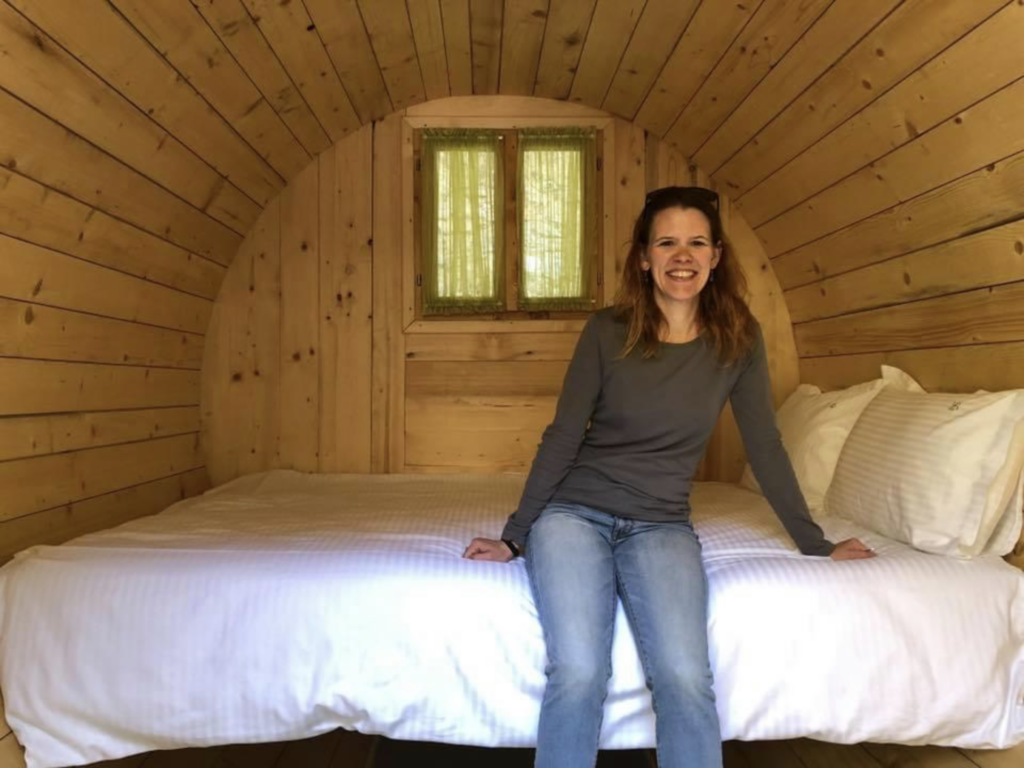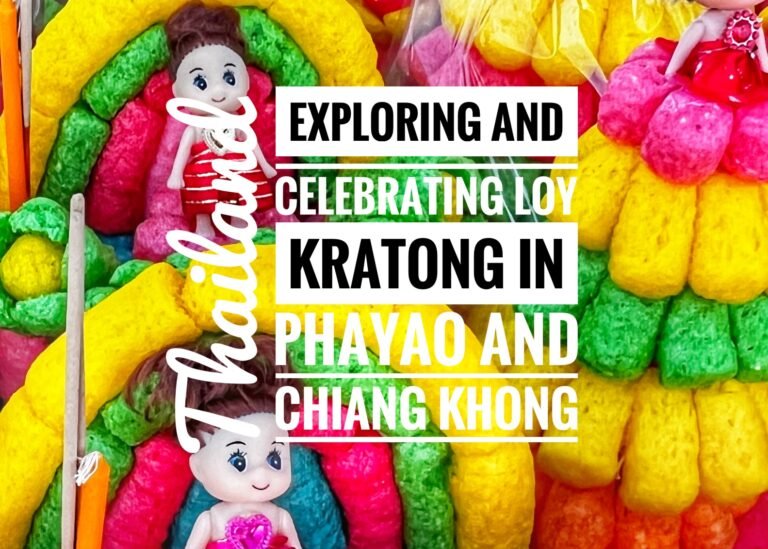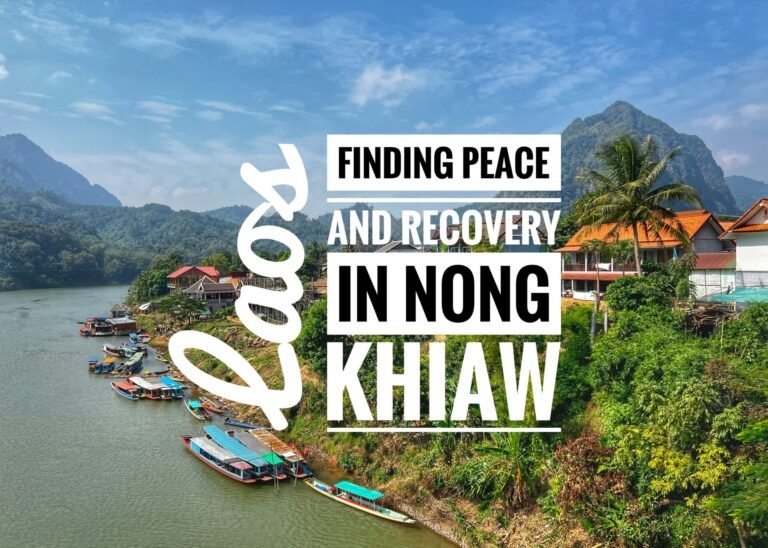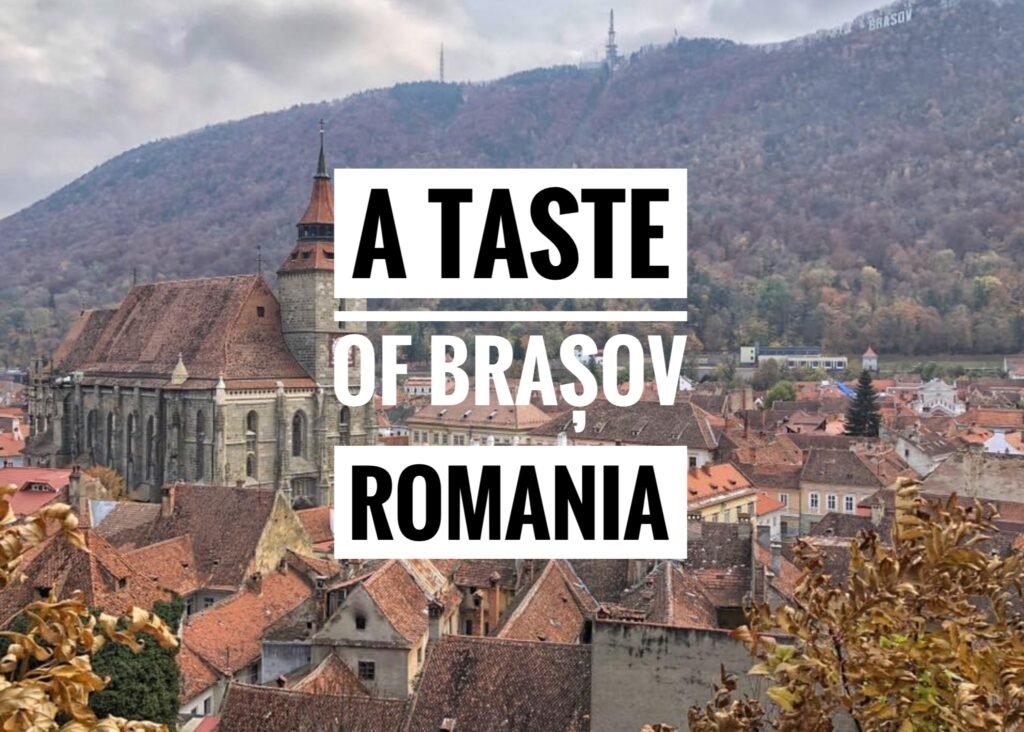
Fringed by the peaks of the southern Carpathian Mountains, Braşov is one of those European cities that is simply saturated in charm with its gothic spires, baroque buildings, medieval gates and daunting towers. It is also a city which is rapidly being discovered and will undoubtedly escalate with the opening of an airport currently under construction. There are abundant opportunities to fill your days here, from restaurants to outdoor activities, to castles and ruins. If you’re looking for just a taste of Romania or want a good base to explore from, Braşov should be top of your list.
Braşov was first documented in 1234. This classic view was taken from the Black Tower up on a hill. The prominent building is the Black Church, which is the largest gothic church in Romania. Its name derives from damage caused by the Great Fire in the late 1600’s when flames and smoke left a lasting impression turning it black on inside. The fire burning the roof lasted for five whole days. In the background at top right you can see the famous Hollywood-esque Brasov sign up on the hill…err… mountain. Our walking tour guides said if you call it a hill you’re bound to insult a local. “It’s a MOUNTAIN!”
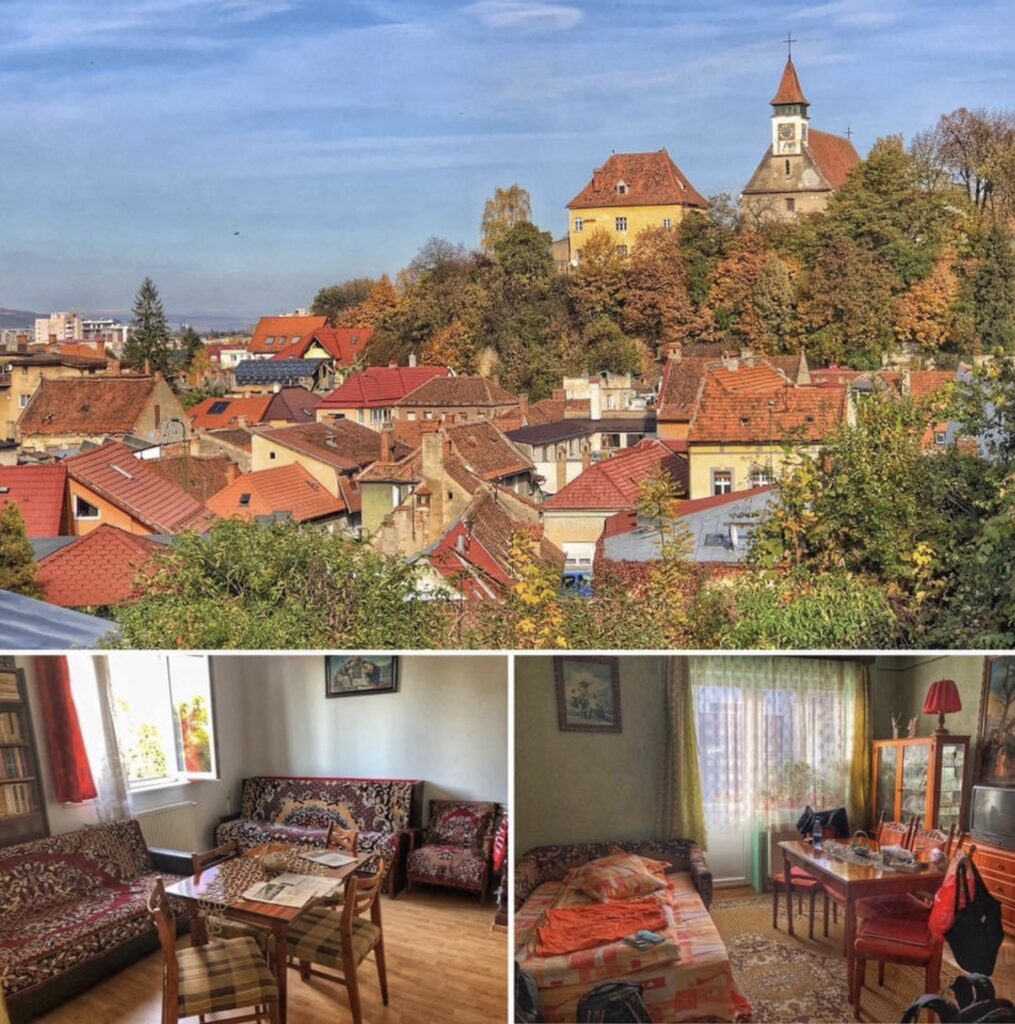
We stayed in Braşov five nights. The first four nights were with a Romanian grandma ($21/night). Unsurprisingly, it fit the bill of grandma’s house… complete with antique furniture and furnishings, a springy sofa bed to sleep on, and three air fresheners that pumped out toxic flowery fumes every 10 minutes, and enough spare dishes to invite all of Brasov’s tourists over for dinner. Fortunately, it had a killer balcony with a great view which we enjoyed luxuriating on for many occasions.
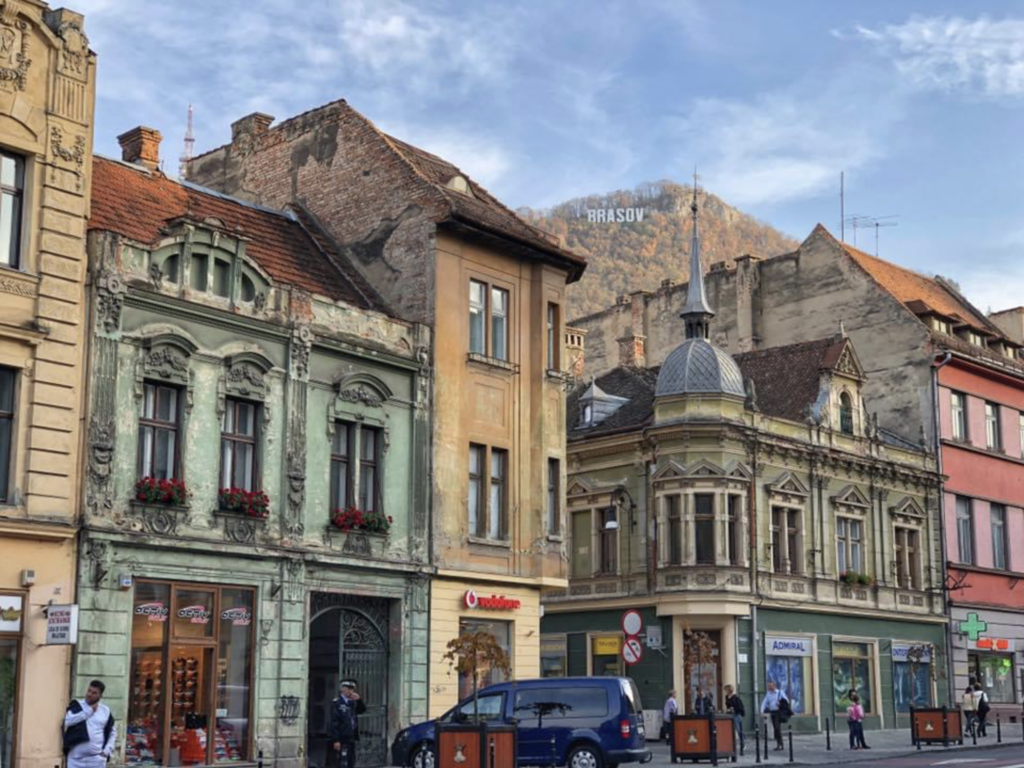
The street scene near our flat.
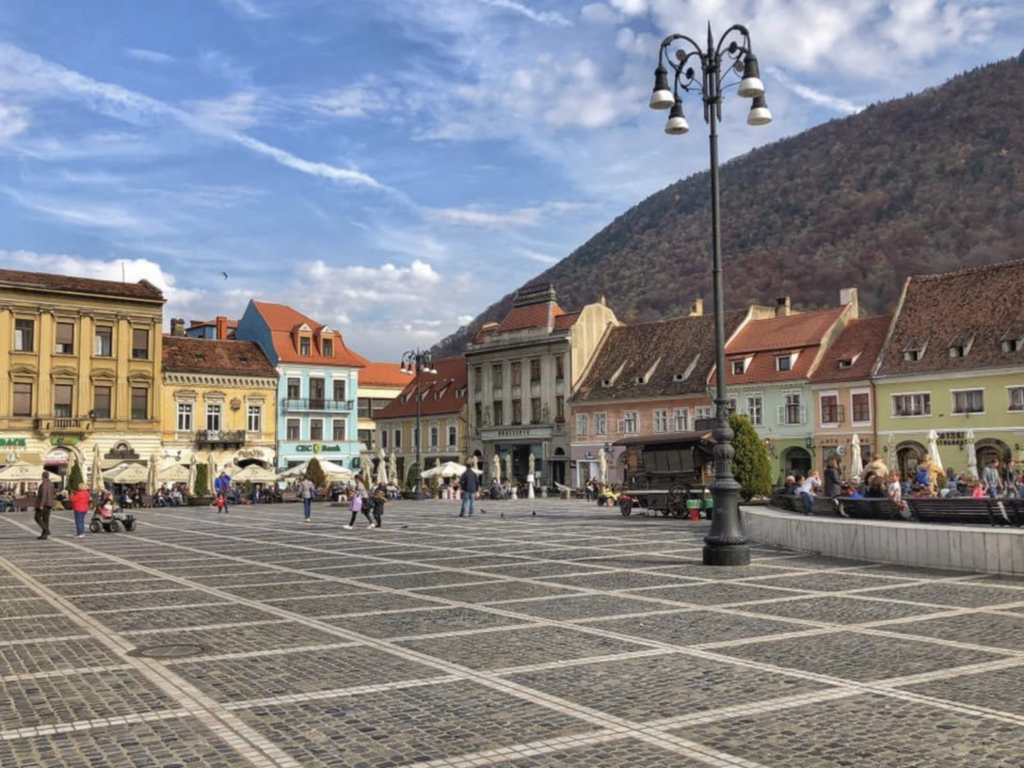
As we often do in a new city, we took the free walking tour which left from Brasov’s center square. We learned in Eastern Europe, squares (though ironically not always four-sided) have always been the hub of activity…for festivals, community gatherings, protests and even executions. During Soviet times these beautiful squares were literally turned into parking lots as a deterrent so that people could no longer have a public space to gather in numbers to socialize. We have seen several squares which continue to be utilized as parking lots in former USSR countries. Fortunately, Brasov’s is not one of them.
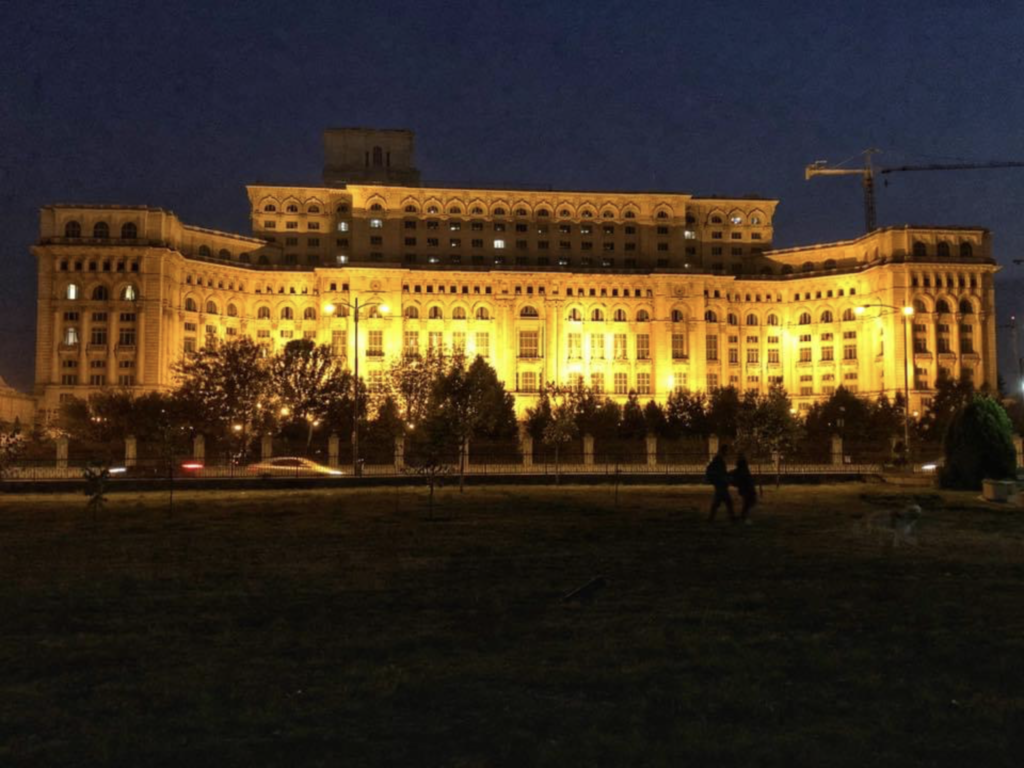
Speaking of squares and executions, the last public execution in Romania took place on December 25, 1989, which was widely publicized on TV for Romanians to enjoy over Christmas dinner. The lives taken were 25-year dictator Nicolae Ceausescu and his wife by their own military. Among other crimes against the Romanian people, the Ceausescu’s were responsible for the razing 1/6 of central Bucharest’s beautiful Old Town in order to build this ridiculous 12-story, 1100 room, 328-foot lobby as his presidential palace and government offices. He also nearly bankrupted the country of Romania in order to build it. It is now the second largest office building in the world after the Pentagon. During the building of his palace, Romania became severely debt laden by Ceausescu’s frivolous construction projects so to make up for this debt he began exporting all of Romania’s food leading to very severe Romanian food shortages, and electricity/heating cut-offs in winter, and to fill factories with workers he further razed thousands of small villages and towns moving the populations to bigger cities. Makes you understand why they televised his public execution on Christmas Day a bit more.
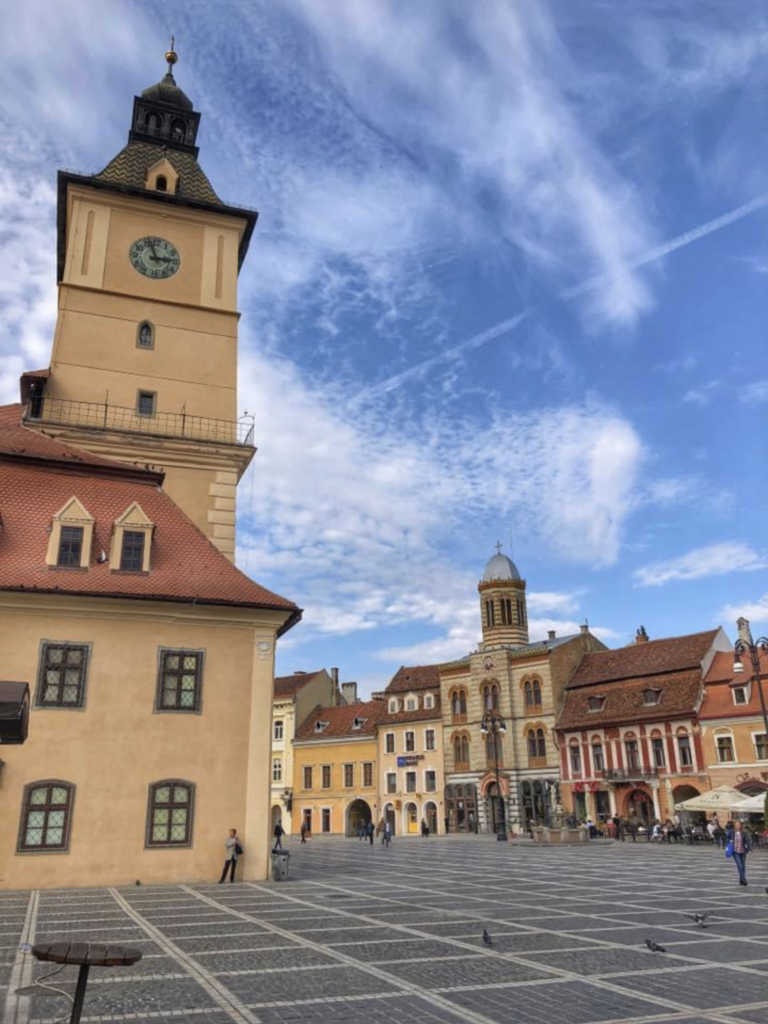
Another view of the square showcases the 1420 Council House, topped by the Trumpeter’s Tower. It’s now used as a history museum.
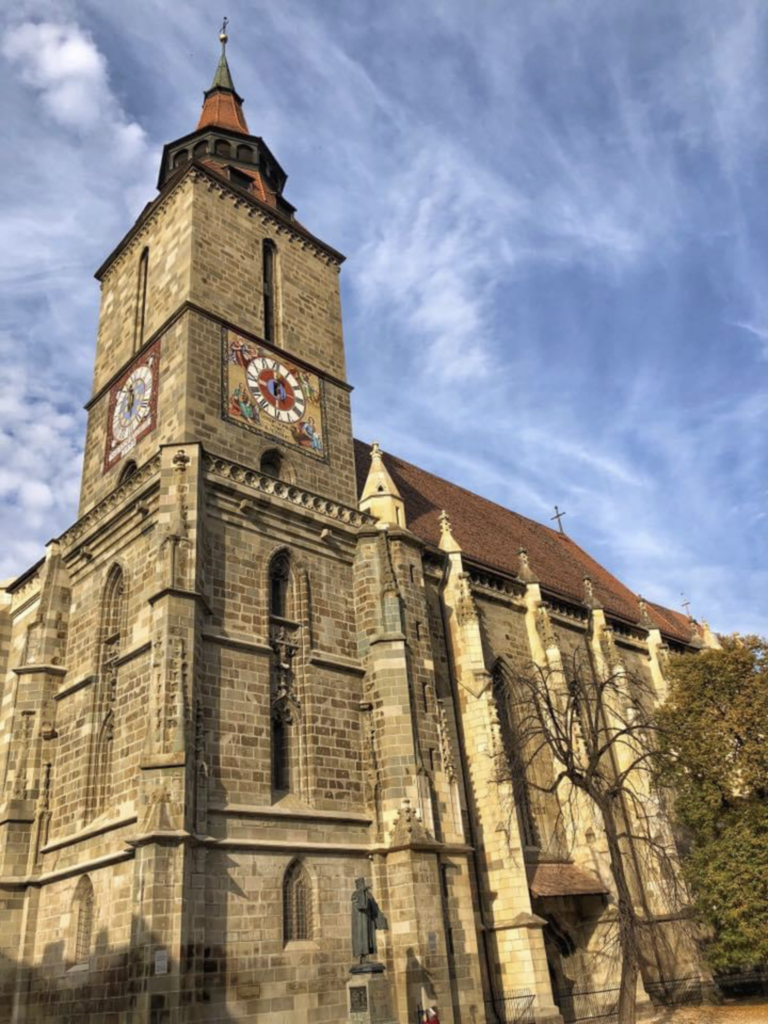
Back at the Black Church for a closer look. The church has been given a scrub down in the last few years so it’s no longer black, but the name stuck.
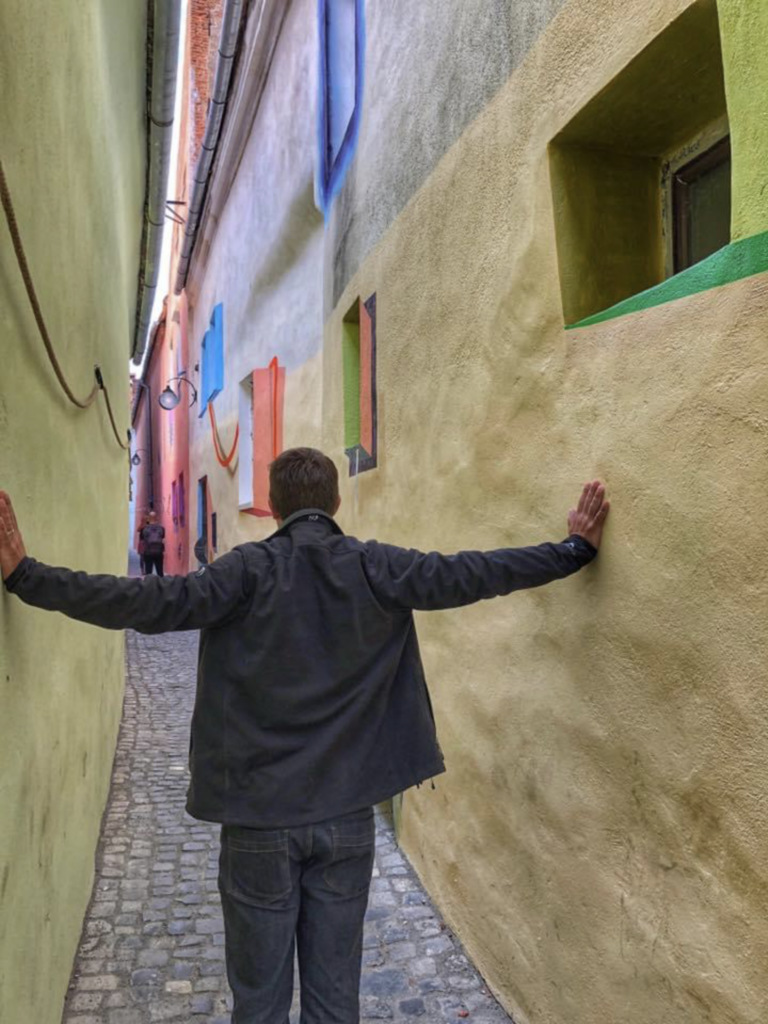
Rope Street (yes, they claim “it’s a street!”) is the third narrowest street in Europe. It’s four-foot across design was developed in the 15th Century for firefighters to pass through, with a bucket of water in each hand, between the city streets. Pretty fun to touch both sides of a street at the same time!
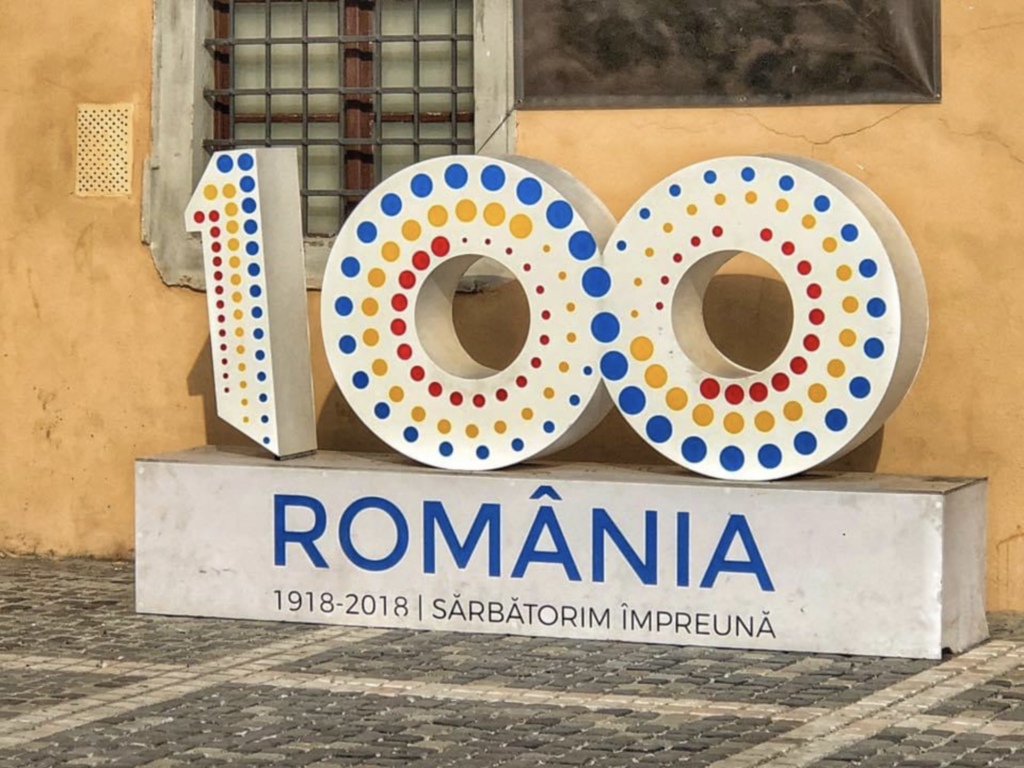
Romania celebrates its 100th anniversary of being a country this year.

This city gate, Poarta Ecaterinei, built in 1559 served as the entrance to the German part of Braşov which was separated from the Romanian one. It’s the only gate to have survived from medieval times and its fairytale turreted tower (one with four surrounding) was representative of the fact that if one came in and broke the law inside the city, the king has granted the mayor the right to enforce the death penalty. The Saxons (Germans) fortified Braşov by building massive stone walls and seven bastions. During the Saxon rule of Brasov, from the 13th to the 17th century, Romanians were forbidden from owning property inside the citadel walls and so they settled beyond the walls, in the southwestern Schei district. Romanians could only enter the town at certain times, and had to pay a toll at the gate for the privilege of selling their produce inside the citadel.

The striking St. Nicholas Church built in 1495 in the Romanian quarter (Schei District) of Braşov. As you can see, the church also used the turreted design. They were making a symbolic statement that only God had that authority, not man.

The lovely trail that runs alongside the fortress wall.
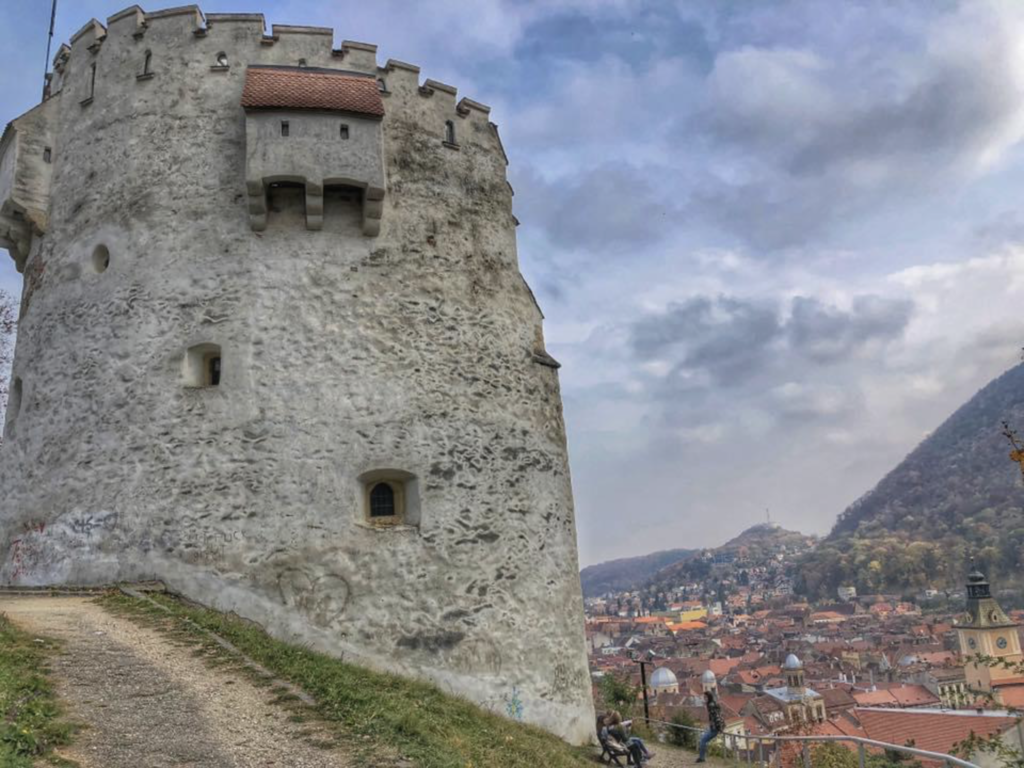
The Black Tower. Yes, it’s white now. See Black Church story
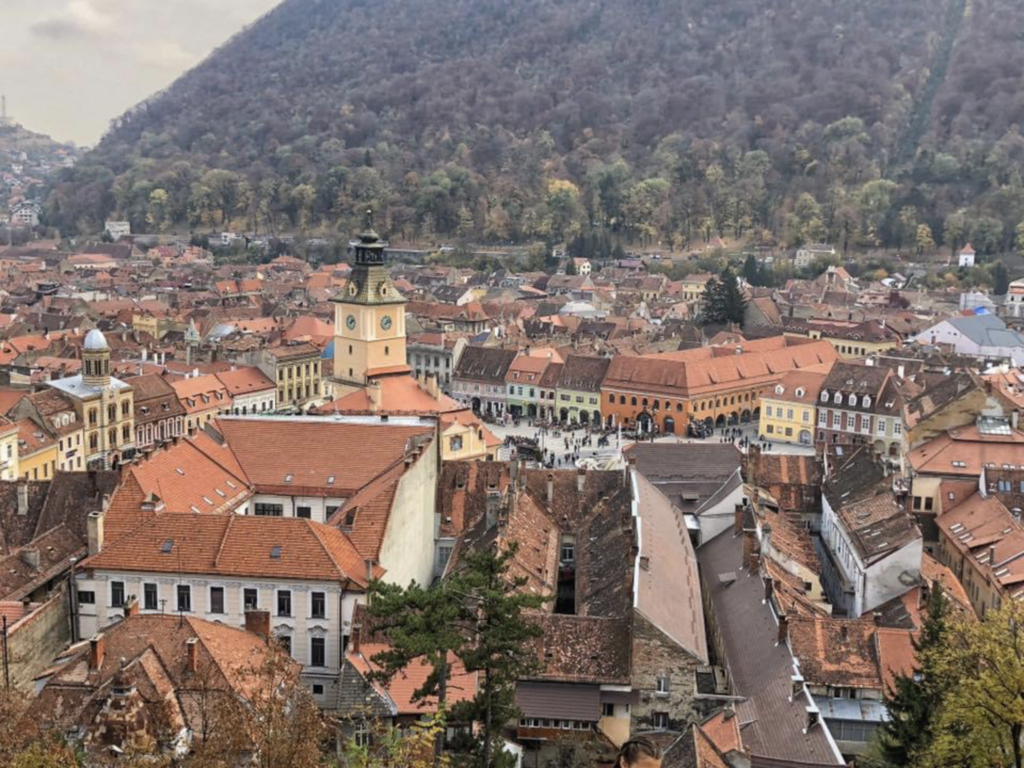
Another view of Braşov.
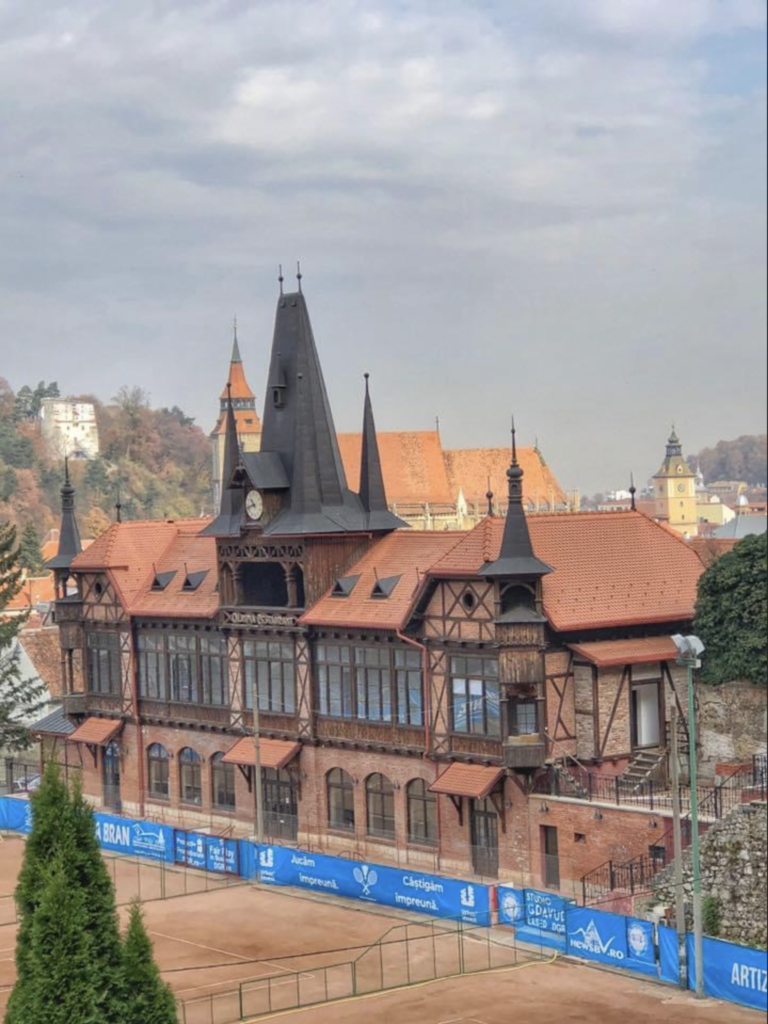
The next day we laced up our hiking shoes and prepared to climb to the top of the hill…err…mountain with the Braşov on top. On the way, we past the Olympia Tennis Club (or where Mandy would work if we lived in Braşov!)
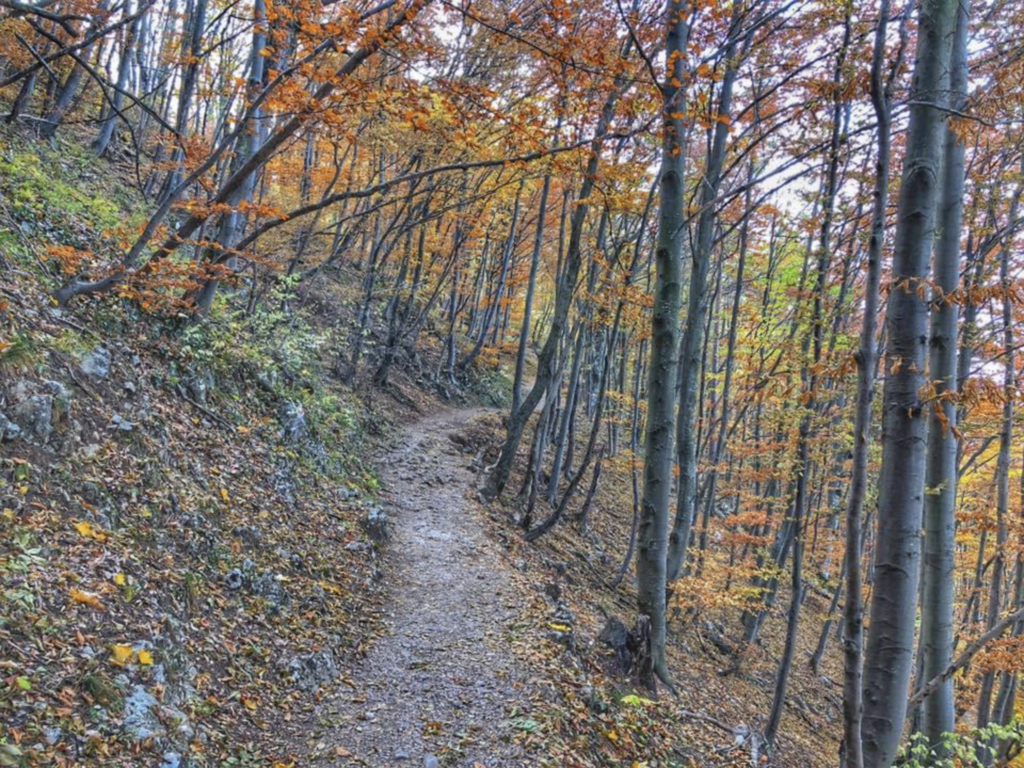
We couldn’t get much better than walking in the crisp fall air and the beautiful fall colors on display. The moderate trail up the mountain, took us about an hour to the top.

And, we were so glad we did this. At the top of the Mt. Tâmpa at 3,133 feet, the views were absolutely astounding of the surrounding mountains and of the city far below.

Mandy takes a breather to soak it all in.
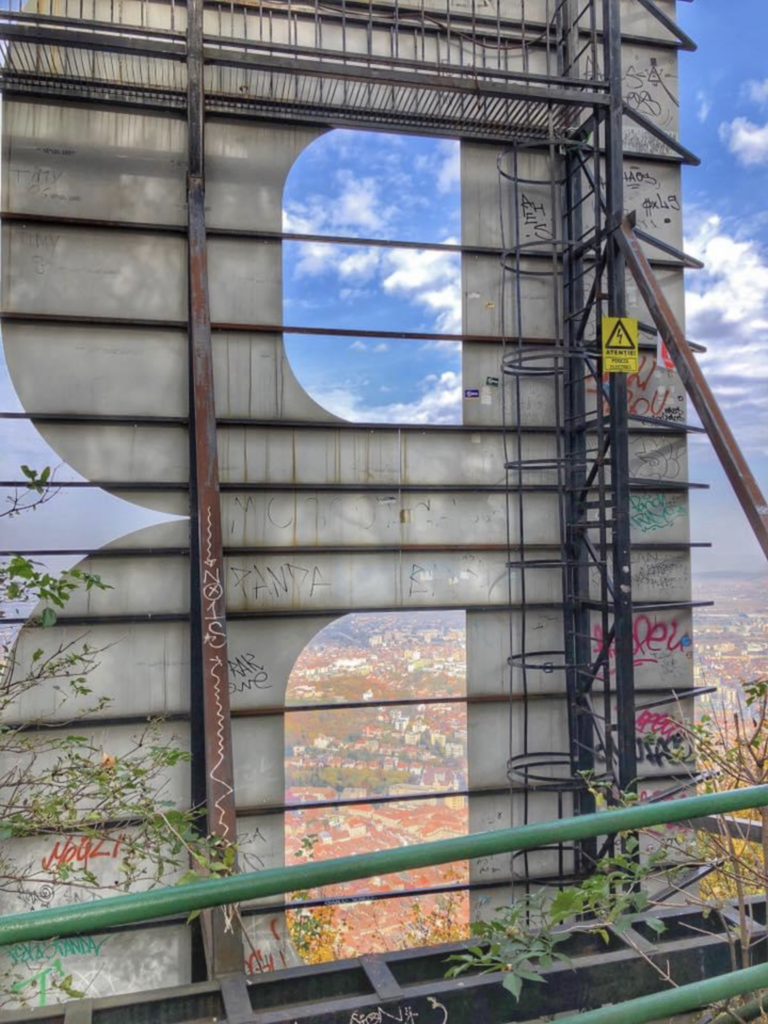
Playing behind the Braşov “B.” Takes out the sting of having missed doing this behind the Hollywood sign in L.A. after all those trips south from Portland!

Jews have lived in Brasov since 1807, when Rabbi Aaron Ben Jehuda was given permission to live in the city, a privilege until then granted only to Saxons. The Jewish Community of Brasov was officially founded 19 years later, followed by the first Jewish school in 1864 and the building of the Synagogue in 1901. The Jewish population of Brasov expanded rapidly to 1,280 people in 1910 and 4,000 in 1940. Today, the community has about 230 members, following WWII and after many families left for Israel between World War II and 1989. (Romania Tourism website).
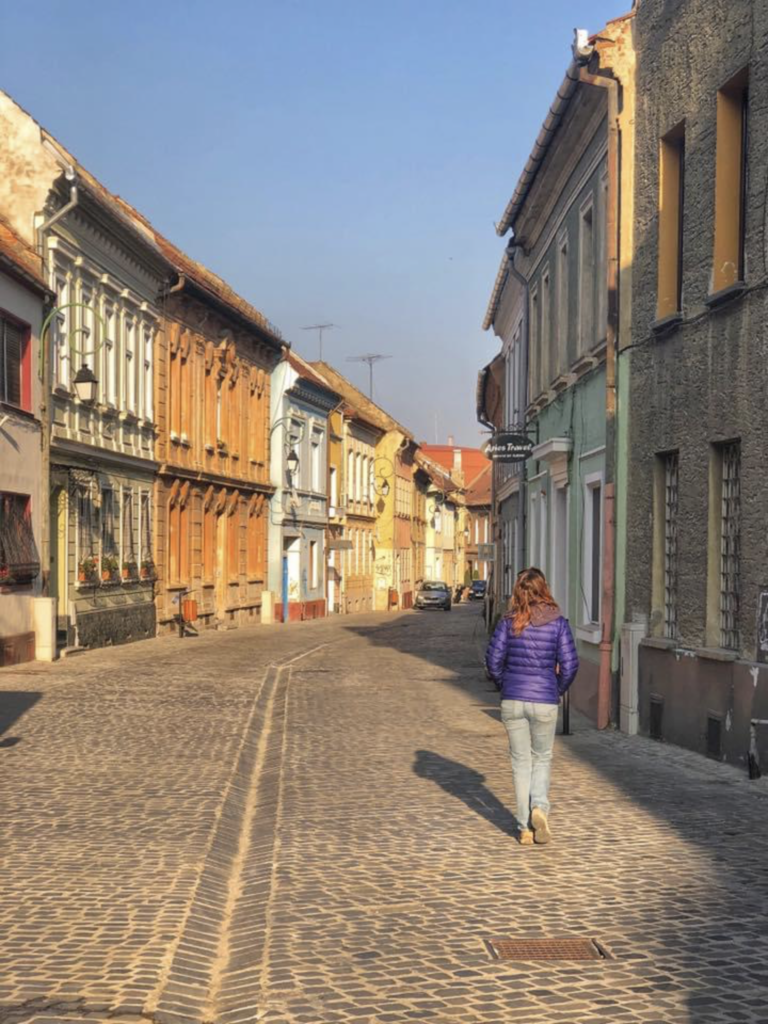
Taking in an idyllic, quiet street away from the crowds
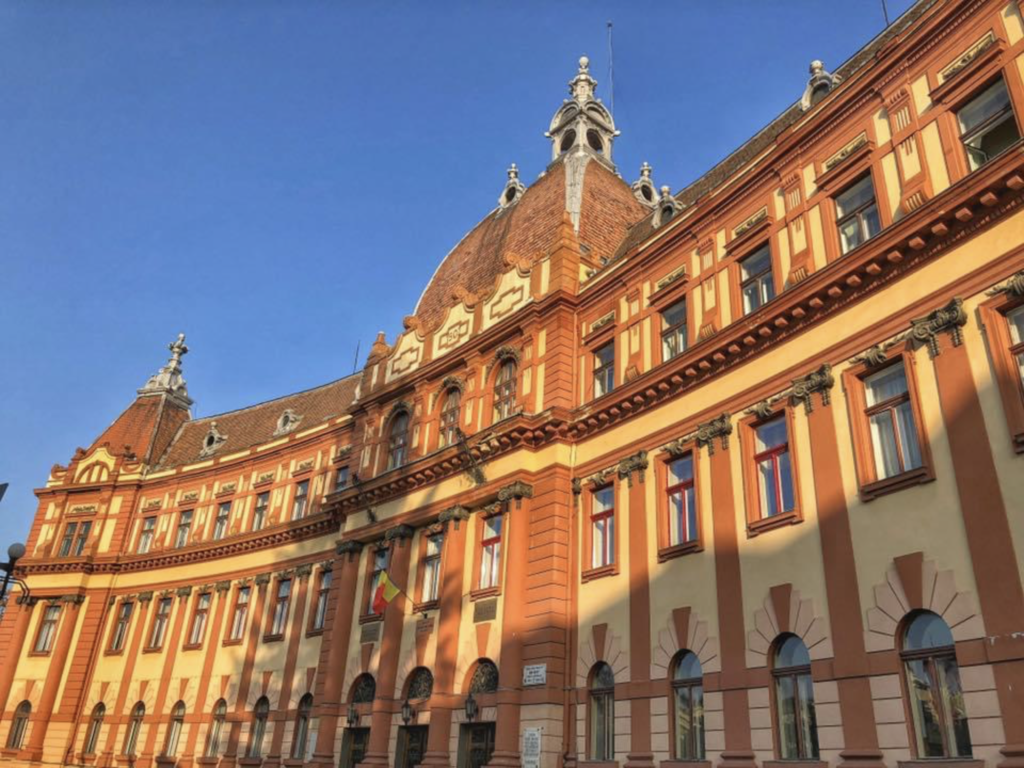
A beautiful government building.
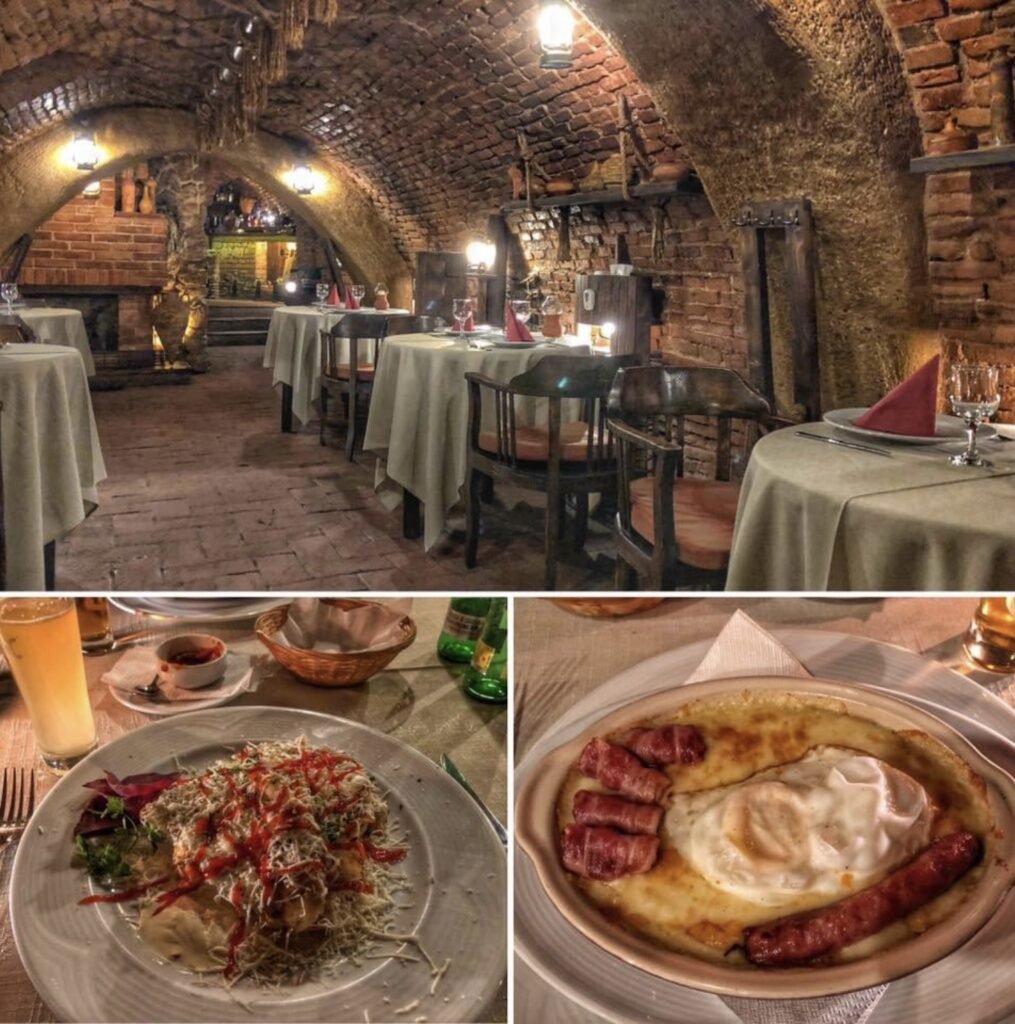
A rare night out for us, we went to the 16th Century cave-like restaurant called Bella Muzica, which we settled upon because they promised to offer Mexican (and Romanian) food—a treat we haven’t had in four months. The setting was cozy and staff very attentive, but the “Mexican” enchilada was not quite the enchilada we were expecting… far from the real deal, the ‘red’ sauce was actually a spicy ketchup. ?Regardless, it was a nice try for Eastern Europe. Greg wisely settled for a more Romanian dish which was basically eggs, sausage, polenta heaped with cheese, bacon and essentially… a meat-gasm.
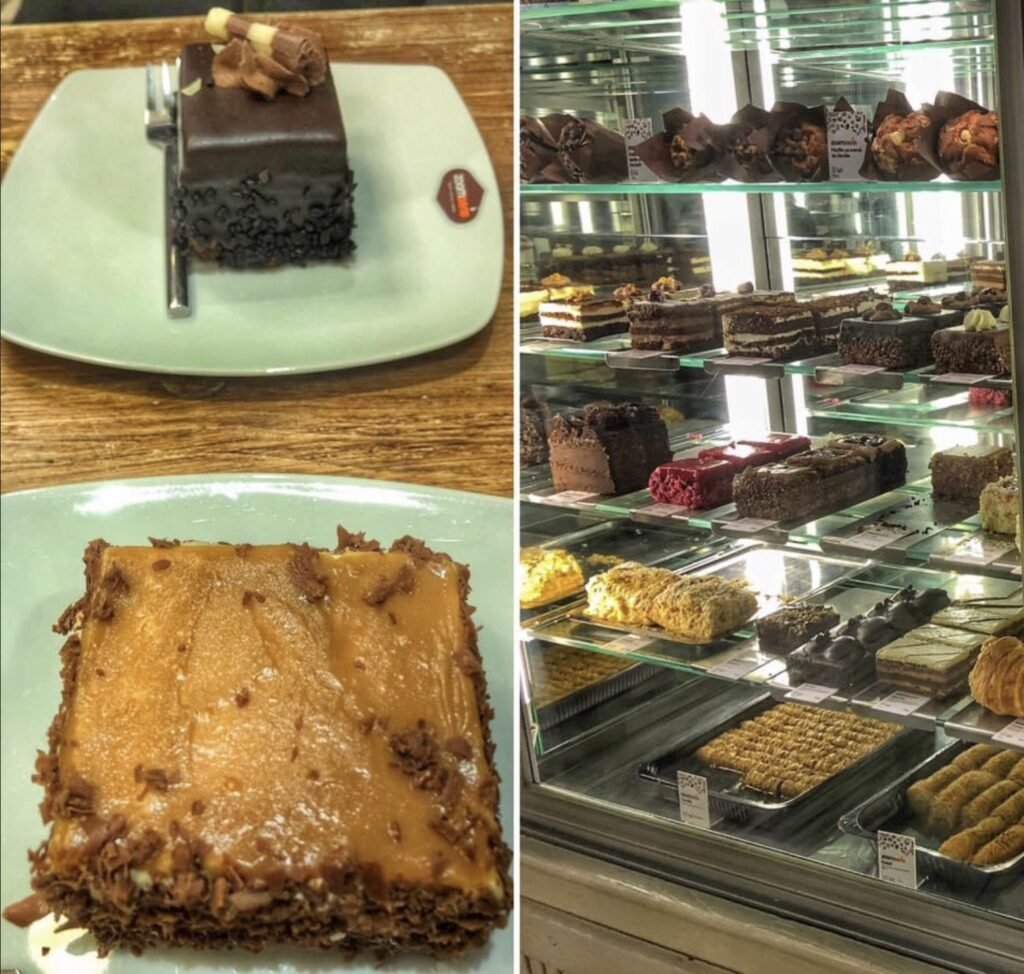
Oh and the dessert was heavenly…
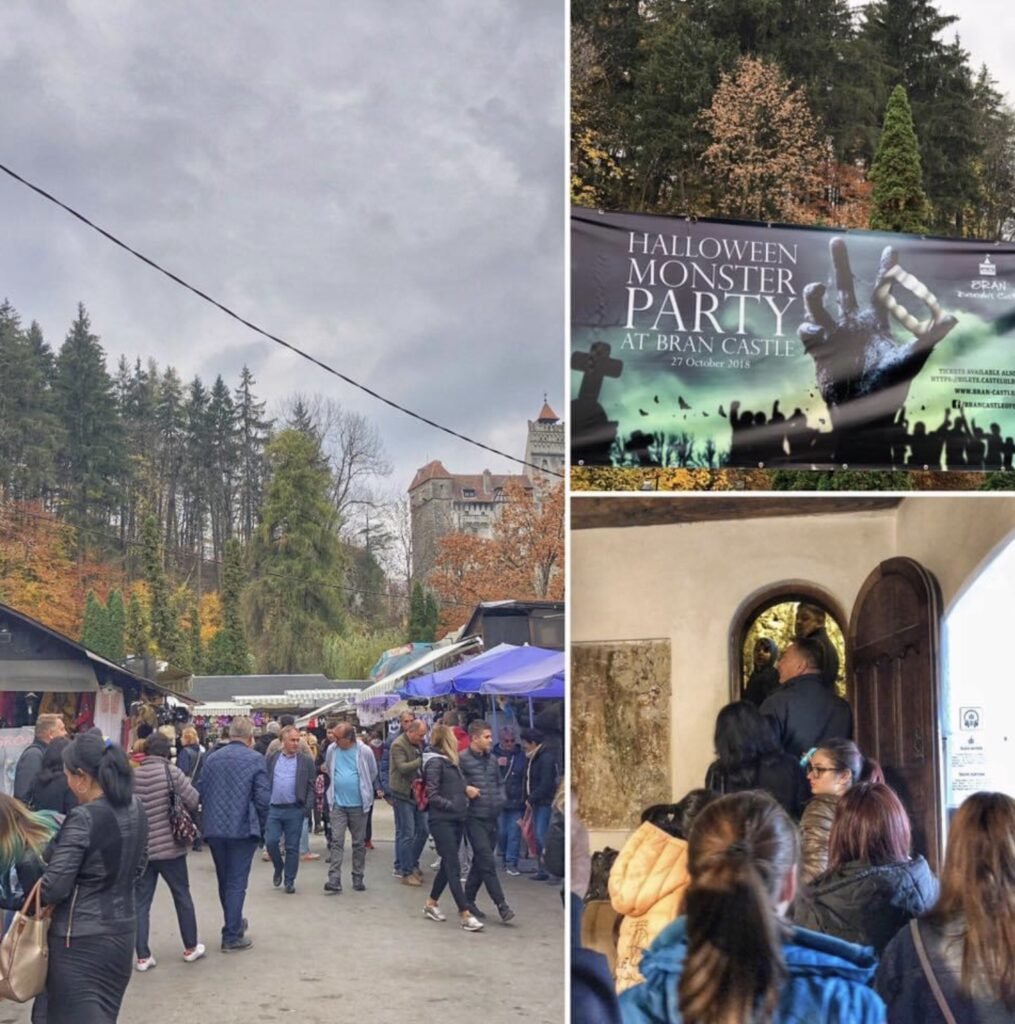
The next day, we went to the “not-to-be-missed” Bran Castle (aka Dracula’s Castle.) For the record, there is hotly contested debate if “Dracula” who was actually Prince Vlad Dracul, even set foot in this very Transylvanian and stoic-looking, perfect-for-marketing purposes as Dracula’s castle. The actual “Dracula” castle-Poenari-is buried deep in the Carpathian mountains and is incredibly difficult to get to without a car, and a lot of physical effort (1,480 rock carved steps) up a mountainside. Since we didn’t have a car, we settled for the “tourist” version and its $20 entrance fee, the intimidating souvenir stall gauntlet, hoards of people shoving their way through the narrow, claustrophobic passageways, and advertisements for the upcoming Dracula Halloween party. As you can guess by our sarcasm, we wouldn’t necessarily recommend it. Especially near to Halloween. By the way, lots more info about Vlad will be included in our Sighisoara post!
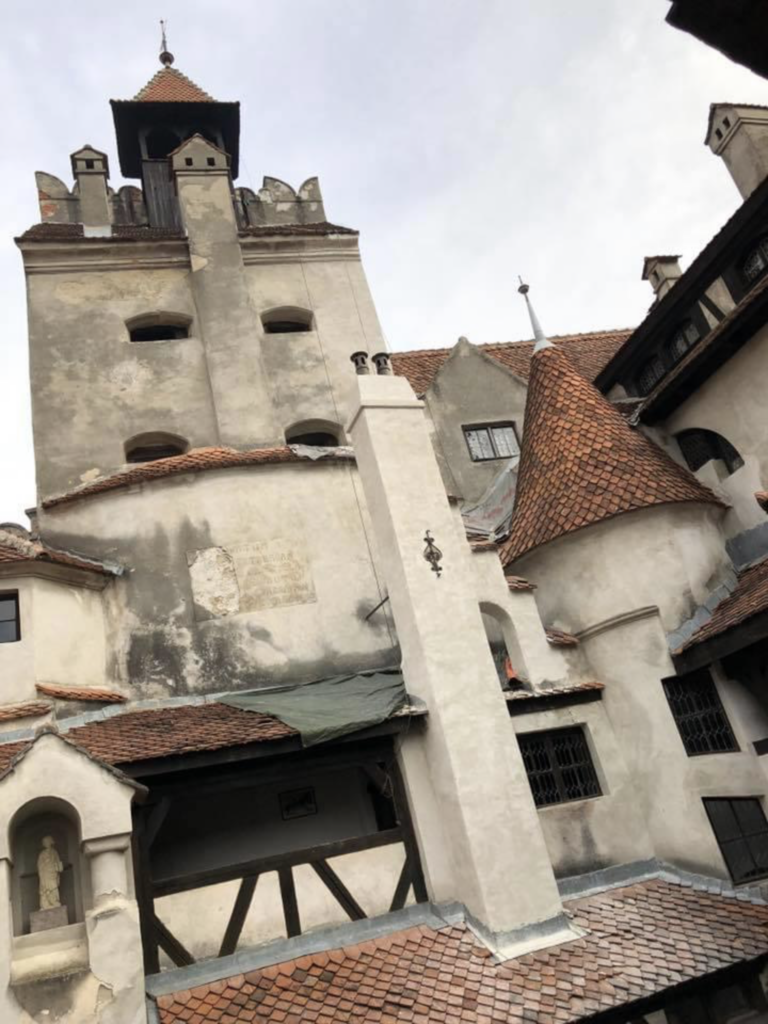
One of the views from inside Bran.
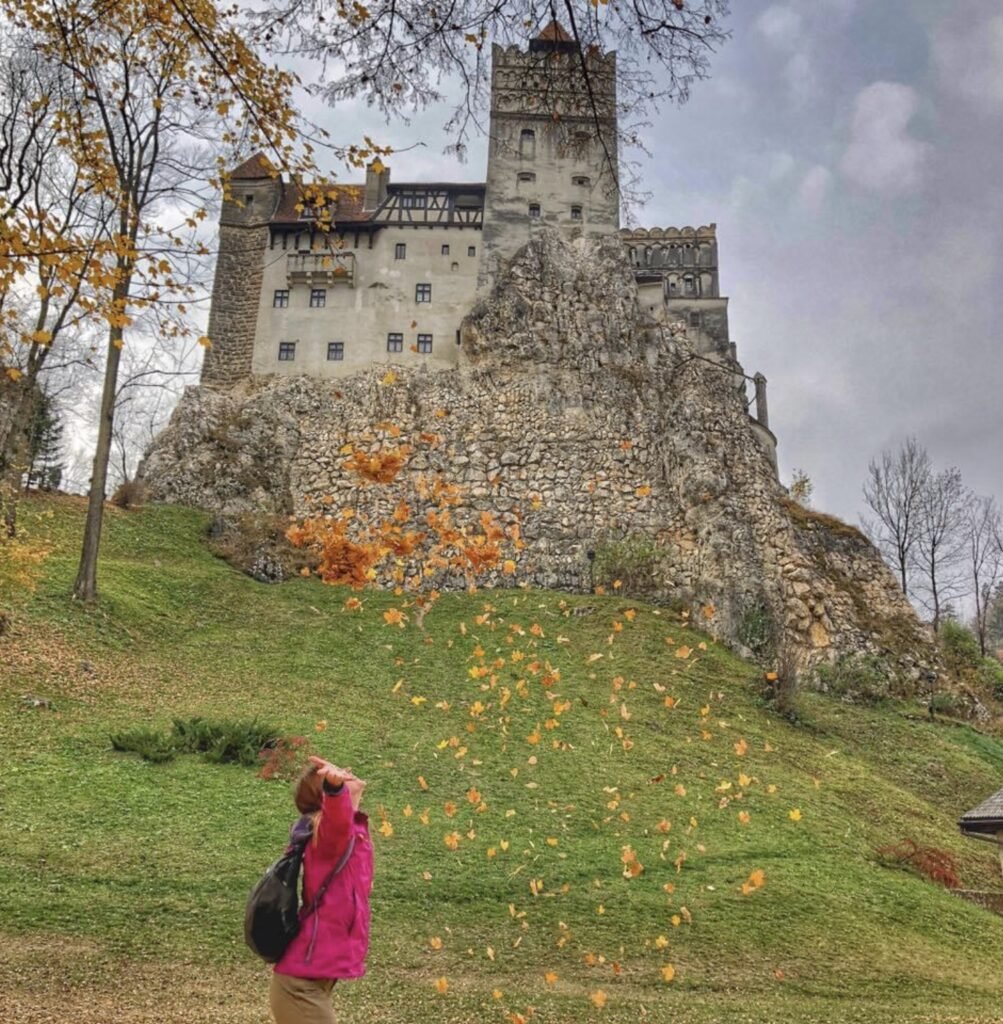
Although the inside was kinda dreadful, the outside was perfect for admiring and reflection, and well worth the trouble to get out to Bran. Also, it’s free to look at from the outside.
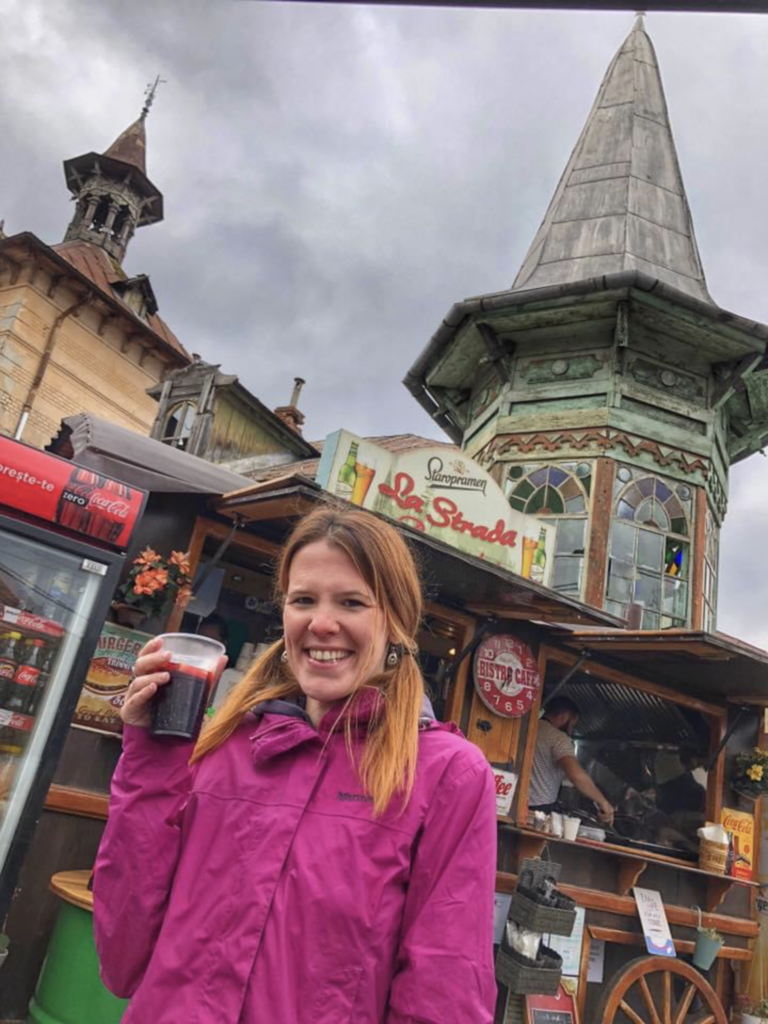
After our tour of Bran we both needed a drink and… boy were we happy to imbibe and wrap our paws around some mulled wine. It was the first of the season and warmly reminded us of the many more which will come!

The Rasnov fortress on the way back to Braşov. Unfortunately the train times didn’t make it possible to stop. We also had trouble lining up the train schedule to go to the other notable castle we wanted to see…Peles. We’re quickly learning that Public transportation can be…challenging…in Romania.
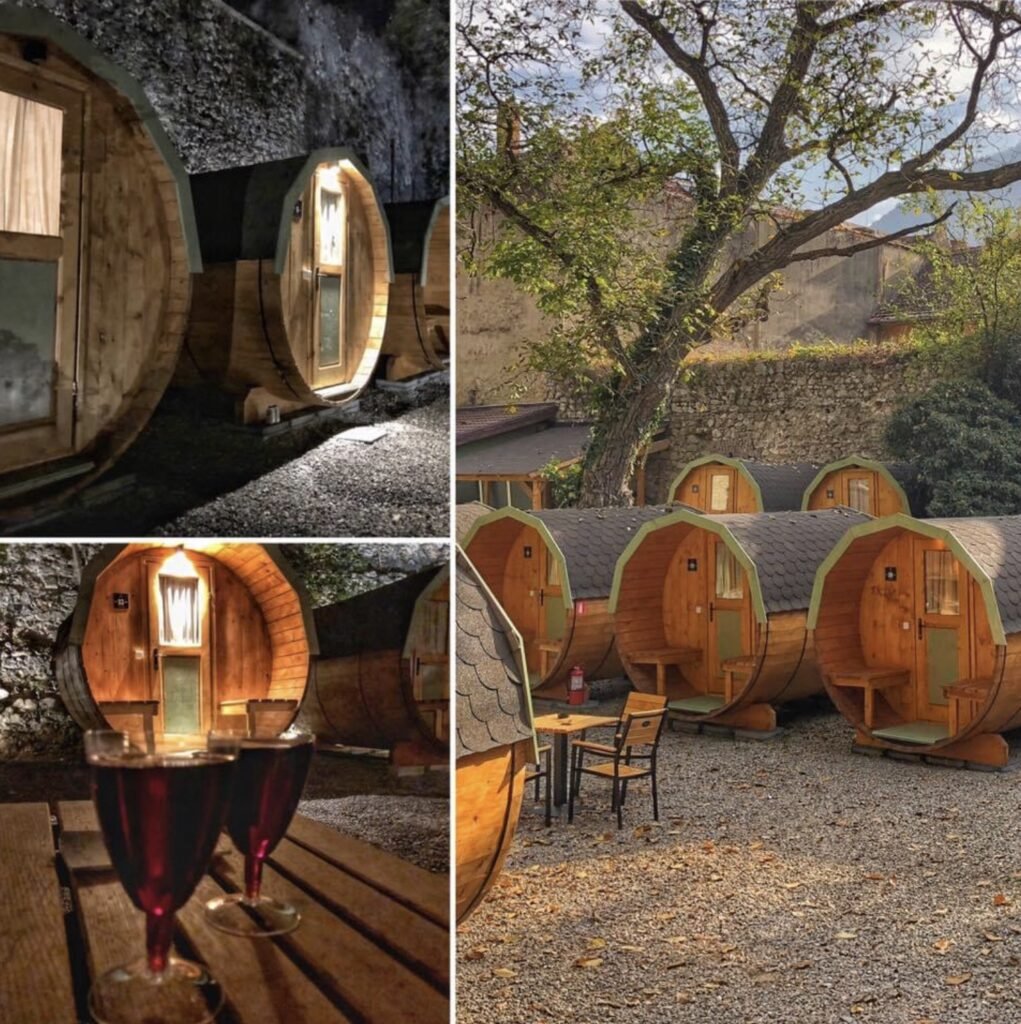
For our last night, we splurged on a unique night out at Drachenhaus Urban Village, where you get to sleep in…fantasyland!!! (a huge converted wine barrel). For $25, It was incredibly fun for a night and well worth the extra day.
